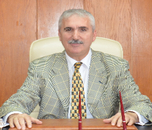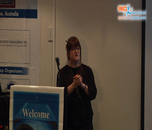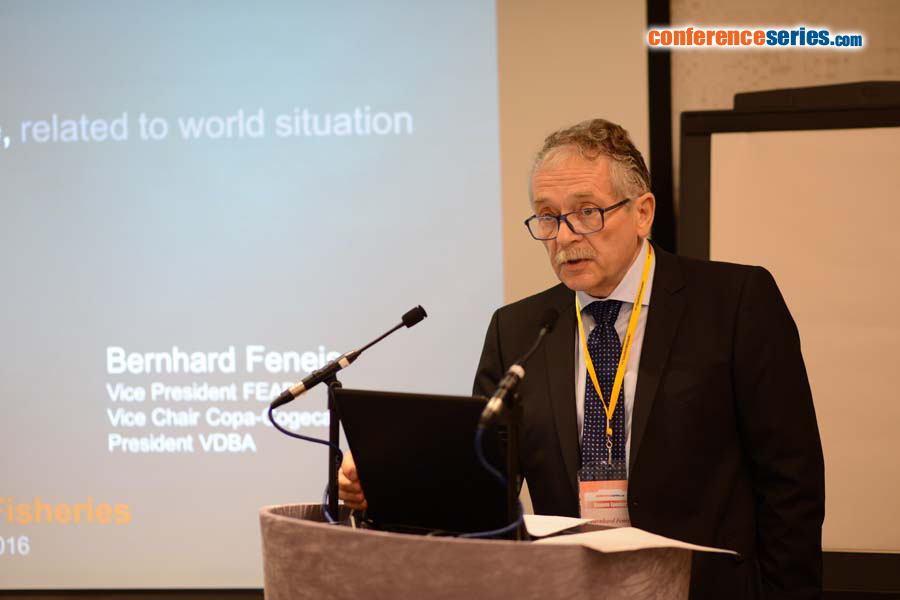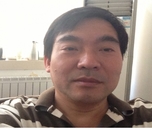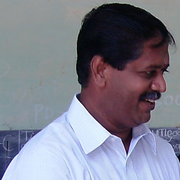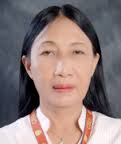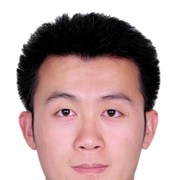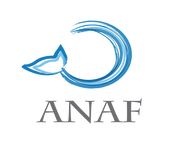Theme: Recent Trends in Aquaculture Innovation
Aquaculture 2017
ConferenceSeries Ltd feels proud to host around 3000+ global events to address the current issues and discoveries in the field of Life sciences, Applied Science & Engineering, Omics and Management, Clinical, Medical and Pharmaceutical sciences.
To the contributors across the globe, we invite you to Conference Series premier 7th International Conference on Aquaculture & Fisheries to be held during October 19-21, 2017 at Rome, Italy. Aquaculture congress is the premier event that brings together a unique and International mix of experts including scientists, researchers and decision makers both from academia and industry across the globe to exchange their knowledge, experience and research innovations. Aquaculture is a Major Field in modern food supply. According to the FAO, aquaculture "is understood as the farming of aquatic organisms including fish, molluscs, crustaceans and aquatic plants. Farming implies some form of intervention in the rearing process to enhance production, such as regular stocking, feeding, protection from predators, etc.
Aquaculture in Italy is characterized of the high level of specialization and large scale production. Traditional extensive aquaculture is still carried out in the “valli” which are brackish lagoons, especially in the north-eastern regions. More modern aquaculture techniques for marine species include onshore intensive farms, cage systems in the sea (mariculture) and, in the case of shellfish, cultivation on ropes and bags (mussels), or directly on the intertidal substrate (clams). Aquaculture is developed along all Italian coasts, but with higher density along the Adriatic coasts.
This Aquaculture conference will cover the new research techniques and concentrate on aquaculture exhibition of new feeds, fish welfare, antibiotics, instruments introduced by the aquaculture fisheries laboratories. It also covers the increase in need for demanding sea food. Aquaculture brings basic and advanced research of Developmental, Toxicological and Transgenic aspects.
Global demand for aquaculture market was valued at USD 156.27 billion in 2015 and is expected to reach USD 209.42 billion in 2021, growing at a CAGR of 5.0% between 2016 and 2021. In terms of volume, the global demand for aquaculture stood at 71,190-kilo tons in 2015.
The global aquaculture market is primarily driven by a decrease in global catchments of fish. Additionally, the rise in demand for fish oil in dietary supplements is expected to grow the demand for aquaculture market during the years to come. However, unfavorable climatic conditions are the major restraint that is expected to limit the growth of aquaculture market in the near future. Furthermore, adoption of rice-fish culture is likely to generate new opportunities for global aquaculture market across the global during the years to come.
Based on different culture, the global aquaculture market is bifurcated into the marine culture, freshwater and brackish water. Among these cultures, the freshwater culture was the largest segment of global aquaculture market in 2015. It accounted for more than 50.0% share of the entire market. Furthermore, this trend is expected to continue in the future years due to the decrease in fishing activities in natural water bodies such as seas and oceans. Moreover, growing demand for sea water species among the consumers is likely to grow the market for aquaculture in marine water culture during the coming years.
Carp, mollusks, crustaceans, salmon, trout and other fish are the key products of global aquaculture market. Among all products, carp dominated the global aquaculture market in 2015. It accounted for more than 32.0% shares of the global aquaculture market. Furthermore, this trend is expected to continue within the forecast period. Moreover, mollusks are another important segment which is expected to be fastest growing product segment of the global aquaculture market during the years to come. This growth is attributed to the increase in adoption of polyculture scenario across the globe aquaculture market.
Based on geographic segmentation, Asia Pacific held the leading position in the global aquaculture market in 2015. China was the major contributor to the aquaculture production in 2015. It accounted for more than 58% shares of the global market. Furthermore, this trend is predicted to continue over the market of aquaculture during the next few years. This growth is attributed to a number of factors such as suitable weather conditions, availability of natural resources and labor at a cheap salary. Furthermore, North America and Europe are expected to have significant growth in near future owing to advancing trends in aquaculture. Latin America is also projected to have moderate growth in coming years.
Some of the key participants operating in the global aquaculture market include Nireus Aquaculture S.A., Blue Ridge Aquaculture, Cermaq ASA, Cooke Aquaculture Inc., Tassal Group Ltd., The Waterbase Limited, Zeal Aqua, Selonda Aquaculture S.A., Carter & Sons Ltd and NSF Certification UK Ltd among others.
Fishing sector
Fishing in Italy takes place along the entire coastline. In 2012, national catches accounted for 197,839 tonnes for a value of EUR 936 million. The size of the Italian fleet has decreased steadily between 2004 and 2012 to 12,934 (-13%) fishing vessels. The fleet is highly diversified with a broad range of vessel types targeting different species predominantly in the Mediterranean Sea. The largest segment within the fleet is represented by small-scale fishing (8,763 vessels), followed by trawlers (2,542 vessels), hydraulic dredges (706), passive polyvalent gears (451), purse seiners (240) and other types. The regions Sicily (23.1%), Puglia (12.3%) and Sardinia (10%) have the highest share of the fleet.
In terms of landing composition, European anchovy, is the most common species landed in terms of volume (42,800 tonnes), followed by striped venus (20,028 tonnes) and European pilchard (19,947 tonnes). In terms of value, European anchovy (EUR 75.6 million) and European hake (EUR 74.35 million) account for the highest value, followed by crustaceans, European anchovy and deep water rose shrimp.
Processing and trade
The canning sector is the main segment of the Italian fish processing industry. The main products are canned and preserved tunas (for which industry is heavily dependent on imports) although there are also a significant number of companies that process anchovies, sardines and shellfish. Some Italian canned tuna brands have been acquired by foreign companies, especially Spanish.
Italy is a net importer of fish and seafood. In 2012, the export of fish and seafood products from Italy amounted to 117,232 tonnes with a value of EUR 500 million, while the Italian imports of fish and seafood products reached 903,038 tonnes valued EUR 4.2 billion.
Nearly half of the export volume is represented by live or fresh fish and seafood amounting to 60,675 tonnes, while the other half of value-added fish and seafood products amounted to 56,557 tonnes. In terms of value, the share of exported live or fresh fish and seafood was 36% (EUR 182 million), while the share of value-added products made up 64% (EUR 318 million). Exports of live or fresh fish and seafood, comprised mainly blue mussels, anchovies, sardines and trout. In the group of value-added products, prepared or canned tuna was the dominant product, followed by frozen sardines, anchovy’s fillets in oil, salted anchovies and frozen shrimps. Approximately 80% of Italian exports of fish and seafood products is directed to EU countries where Spain is the principle market, followed by Germany, France and Greece. Among non-EU countries, Tunisia, Switzerland and Albania are the largest destinations for Italian exports of fish and seafood products.
In 2012, imports of fish and seafood into Italy was 8 times higher than exports. The major part of Italian imports is represented by value added fish and seafood products (703,487 tonnes with a value of EUR 3,291 million), followed by live and fresh fish and seafood (199,551 tonnes valued EUR 916 million).
Imported value added fish and seafood were mainly prepared/canned tuna, frozen squid, octopus and tuna steaks. Of the imported live and fresh fish and seafood, blue mussels, salmon, seabream, seabass, squid, shrimps, oysters and swordfish were the main species. About half the Italian imports of fish and seafood (54%) were supplied by EU countries of which Spain is by far the largest supplier of fish and seafood to the Italian market, followed by the Netherlands, Greece and France. Among non-EU countries, Vietnam, Thailand, Ecuador, Morocco and China are the most important supplying countries.
Aquaculture in Italy
Aquaculture in Italy is characterised of the high level of specialization and large scale production. Traditional extensive aquaculture is still carried out in the “valli” which are brackish lagoons, especially in the north-eastern regions. More modern aquaculture techniques for marine species include onshore intensive farms, cage systems in the sea (mariculture) and, in the case of shellfish, cultivation on ropes and bags (mussels), or directly on the intertidal substrate (clams). Aquaculture is developed along all Italian coasts, but with higher density along the Adriatic coasts.
In 2012, the total output of the Italian aquaculture sector amounted to 194,800 tonnes with a value of EUR 524 million. The national aquaculture sector is represented by shellfish (65% or 126,000 tonnes) and finfish farming (35% or 68,800 tonnes). Compared to 2011, the total volume of the national aquaculture production went down by 4.4%. The decline has mainly been attributed to the fall in shellfish production, while the finfish production has been stable since 2002.
In the shellfish sector, blue mussels (96,000 tonnes) and cross-cut carpet shell (vongole veraci, 30,000 tonnes) are the main species. Finfish farming is divided into freshwater fish species and marine species. The output of freshwater farmed fish amounts to 40,700 tonnes, of which rainbow trout (37,800 tonnes) has the major share, followed by sturgeon (1,700 tonnes) and European eel (1,200 tonnes). Production of the marine farmed fish amounts to 28,100 tonnes, where seabream (9,400 tonnes) and seabass (7,900 tonnes) are the main farmed species.
The Italian aquaculture sector is represented by small size enterprises, dominated by family run business with no more than 5-10 employees. The ‘legal status’ firms in the shellfish segment are mostly co-operative organisations, where every worker is also a member of the organization. The total number of employees in the fisheries and aquaculture sector was 58,100 persons (2011).
Conference Highlights
To share your views and research, please click here to register for the Conference.
To Collaborate Scientific Professionals around the World
| Conference Date | October 19-21, 2017 | ||
| Sponsors & Exhibitors |
|
||
| Speaker Opportunity Closed | Day 1 | Day 2 | Day 3 |
| Poster Opportunity Closed | Click Here to View | ||
Useful Links
Special Issues
All accepted abstracts will be published in respective Our International Journals.
- Journal of Aquaculture Research & Development
- Fisheries and Aquaculture Journal
- Journal of Fisheries & Livestock Production
Abstracts will be provided with Digital Object Identifier by














